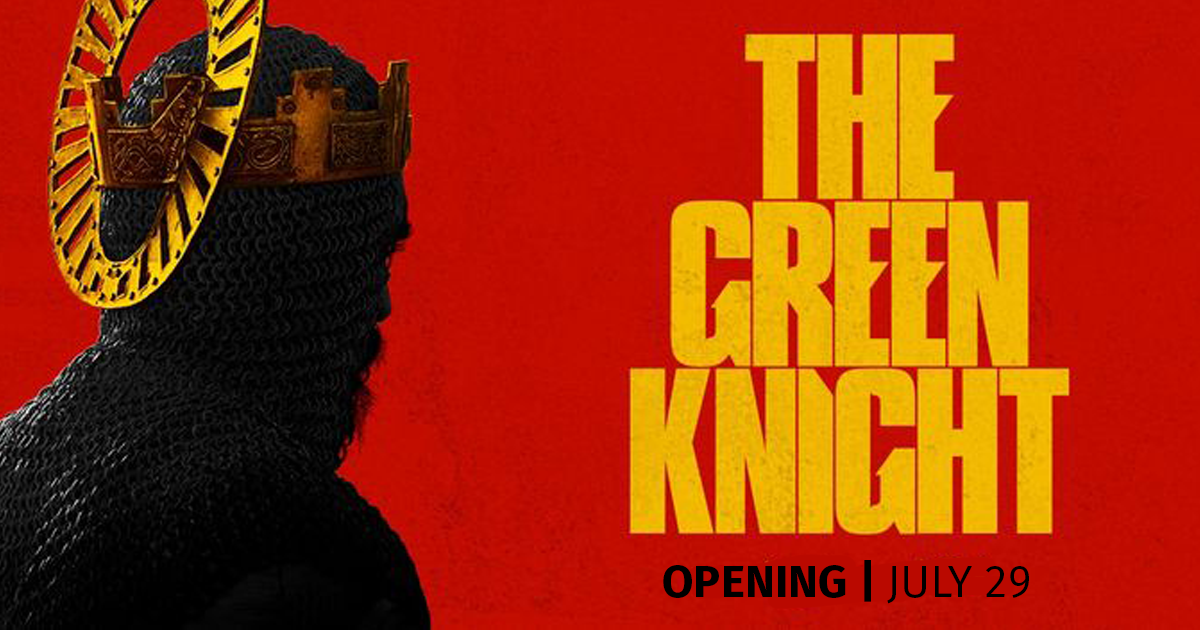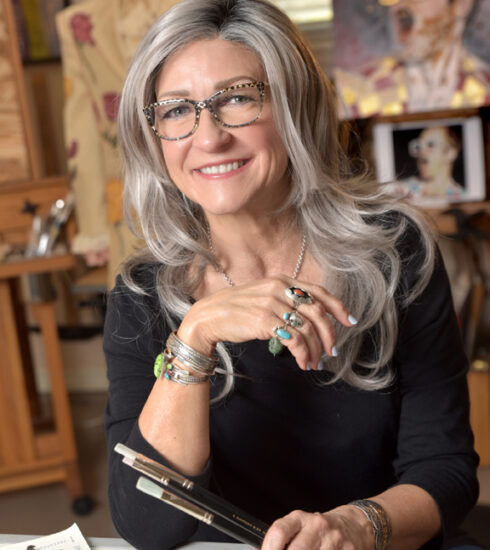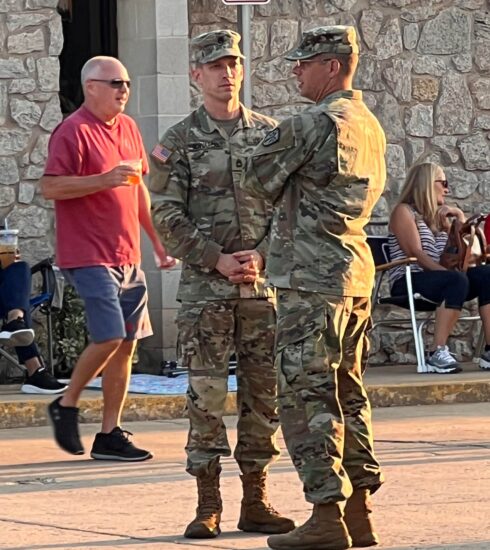Crystal Z. Campbell’s filmic and sonic installation immerses visitors in contemplation of the 1921 Tulsa Race Massacre
![]()
Over the course of 18 hours, 35 square blocks of Tulsa’s Greenwood District were destroyed by White rioters who obliterated a prosperous and progressive Black community. Oklahoma artist and Guggenheim Fellow Crystal Z. Campbell’s multimedia exhibition Flight incorporates archival film and sound in an effort to contextualize and shed light on public secrets in American history. The exhibition continues through Oct. 28 at Oklahoma Contemporary’s new downtown campus.
Carina Evangelista, Oklahoma Contemporary’s director of curatorial affairs, said Flight compels visitors to confront the events of the 1921 Tulsa Race Massacre and other instances when history overlooks or delays acknowledgement of historical events and to see their long-ranging impact.
“Campbell’s practice is geared, among other things, toward throwing light on the seemingly invisible or inaudible aspects of public secrets,” Evangelista said. “Flight proposes a way of feeling one’s way through the missing, muddied and delayed historical accounting, the dimensions of which inextricably condition the inequity that persists today. Video projected on the wall outside the gallery draws visitors from the corridor toward the space transformed by the artist into an immersive experience, positioning the viewer within the installation as witness to the thoughtful parsing of a past through the present.”
From the moment visitors enter Flight, they are transported sonically to the neighborhood by You Dropped a Bomb on Me, the 1982 hit single by The GAP Band. The trio, consisting of brothers Charlie, Ronnie and Robert Wilson, named their group after the Greenwood, Archer and Pine streets in the district. In the context of Flight, the song evokes the planes used to bomb the district May 31-June 1, 1921. From there, projections and installed pieces illuminate how received history refracts or even impedes the telling of some stories. At a time when history itself is the subject of heated debate, Flight keeps the conversation about difficult subjects alive.
But while the massacre provides a context for Flight, the exhibition is broad enough to encompass other instances in which events from history fell from memory. Video, three-channel sound and vinyl as well as digitized 35-mm and 16-mm film are incorporated with archival material footage from film shot by Solomon Sir Jones documenting Black communities in Oklahoma in the 1920s and footage from psychologist B.F. Skinner’s research on conditioning behavior.
Evangelista said that Flight should be seen as a poetic exploration of these themes rather than a detailed historical account.
“Suffused with light, sound and projected image, Campbell’s architectural and optical intervention is both metaphor and poetry,” she said. “The word ‘flight,’ which could be viewed as the amalgam of ‘fight’ and ‘light,’ pierces the window from inside the gallery — as if to serve as a puncture valve in a chamber of silenced history.”
Flight is on view in the W.C. Payne Foundation Artist-in-Residence Studio Gallery at Oklahoma Contemporary, located at 11 NW 11th St. in Oklahoma City. Also currently on view is We Believed in the Sun, in which artists Ron Tarver and Ebony Iman Dallas celebrate the ongoing impact of Oklahoma City’s Civil Rights Movement. Exhibitions at Oklahoma Contemporary are always free. Visitors can reserve their slot at okcontemp.org/tickets.
Campbell’s first solo painting exhibition, Notes From Black Wall Street, is currently on view at ahha Tulsa.
A media kit featuring this press release and high-resolution images of Flight can be found at bit.ly/OC_Flight. Interviews can be arranged through Director of Communications Lori Brooks (lbrooks@okcontemp.org). Past press releases and information are archived at oklahomacontemporary.org/media.
About Crystal Z Campbell
Crystal Z Campbell is a multidisciplinary artist who uses film, live performance, sound, painting, installation and writing to amplify underacknowledged histories and public secrets. Her work has been exhibited and screened internationally at The Drawing Center, ICA-Philadelphia, REDCAT and the Studio Museum of Harlem, among many other museums, galleries and cultural institutions. Campbell is a recipient of the Pollock-Krasner Award and the Tulsa Art Fellowship; and of residencies including the Whitney Independent Study Program, Black Spatial Relics, MacDowell, and Skowhegan. A current Harvard Radcliffe Institute and Film Study Center Fellow, Campbell was recently awarded a 2021 Guggenheim Fellowship in Fine Arts. Of African-American, Filipino, and Chinese descent, the artist lives in Oklahoma.
About Oklahoma Contemporary
Oklahoma Contemporary is a multidisciplinary contemporary arts organization, providing a catalyst for the exploration of creativity and contemporary practice through a program of groundbreaking exhibitions, performances and educational programs. Developed by and for Oklahomans to present and explore the key innovations, issues and concerns of the art of our time, Oklahoma Contemporary does so while drawing on the dynamic aesthetic, cultural, historical and political landscape of the state. At its core, the institution is an inclusive space – Oklahoma Contemporary believes that art is for everyone and centers accessibility and education at the core of all programming. Exhibitions are always free. You are always welcome here. Oklahoma Contemporary is a regional 501(c) (3) nonprofit organization founded in 1989 by businessman and philanthropist Christian Keesee and Kirkpatrick Foundation Director Marilyn Myers.










